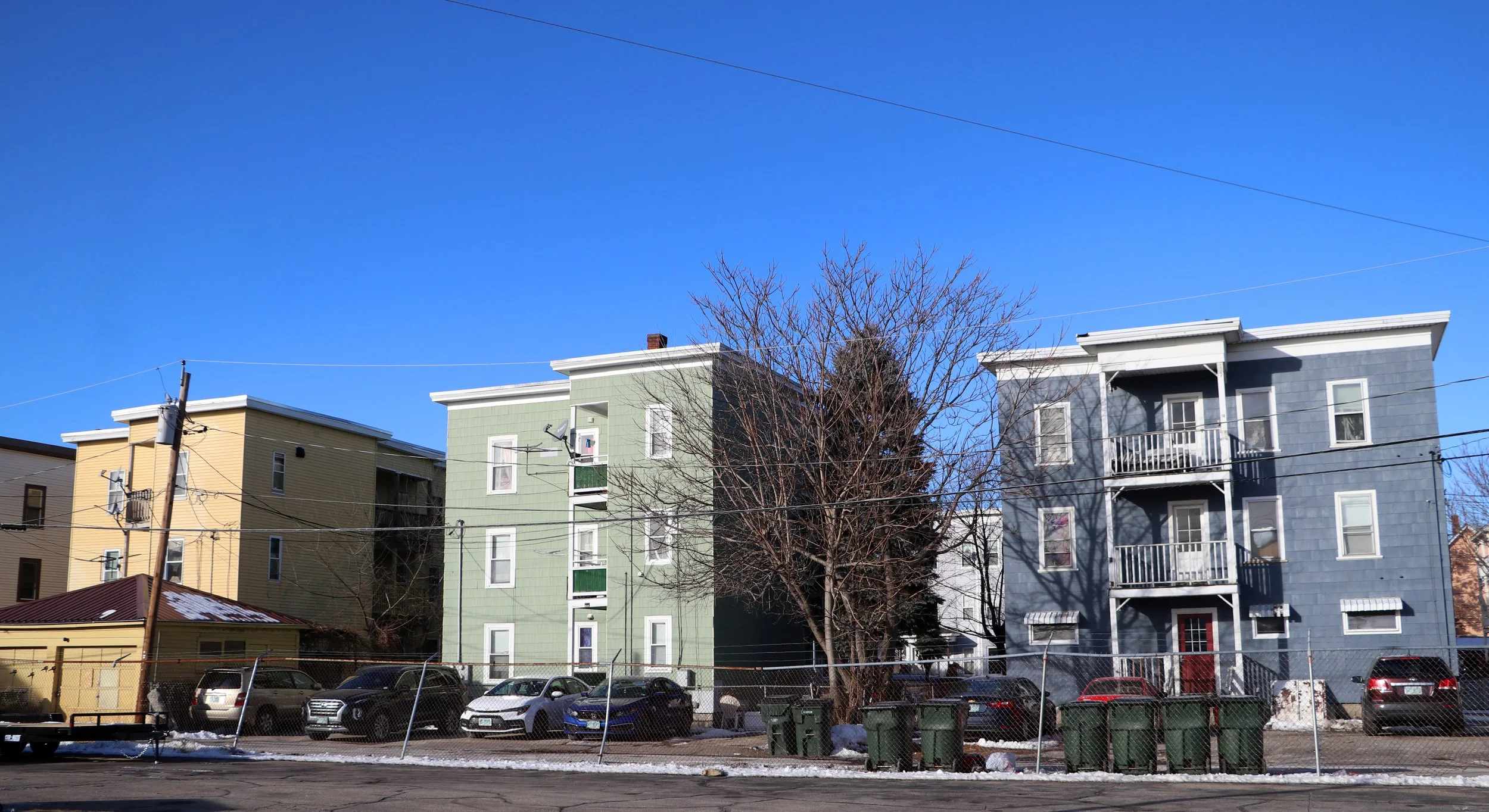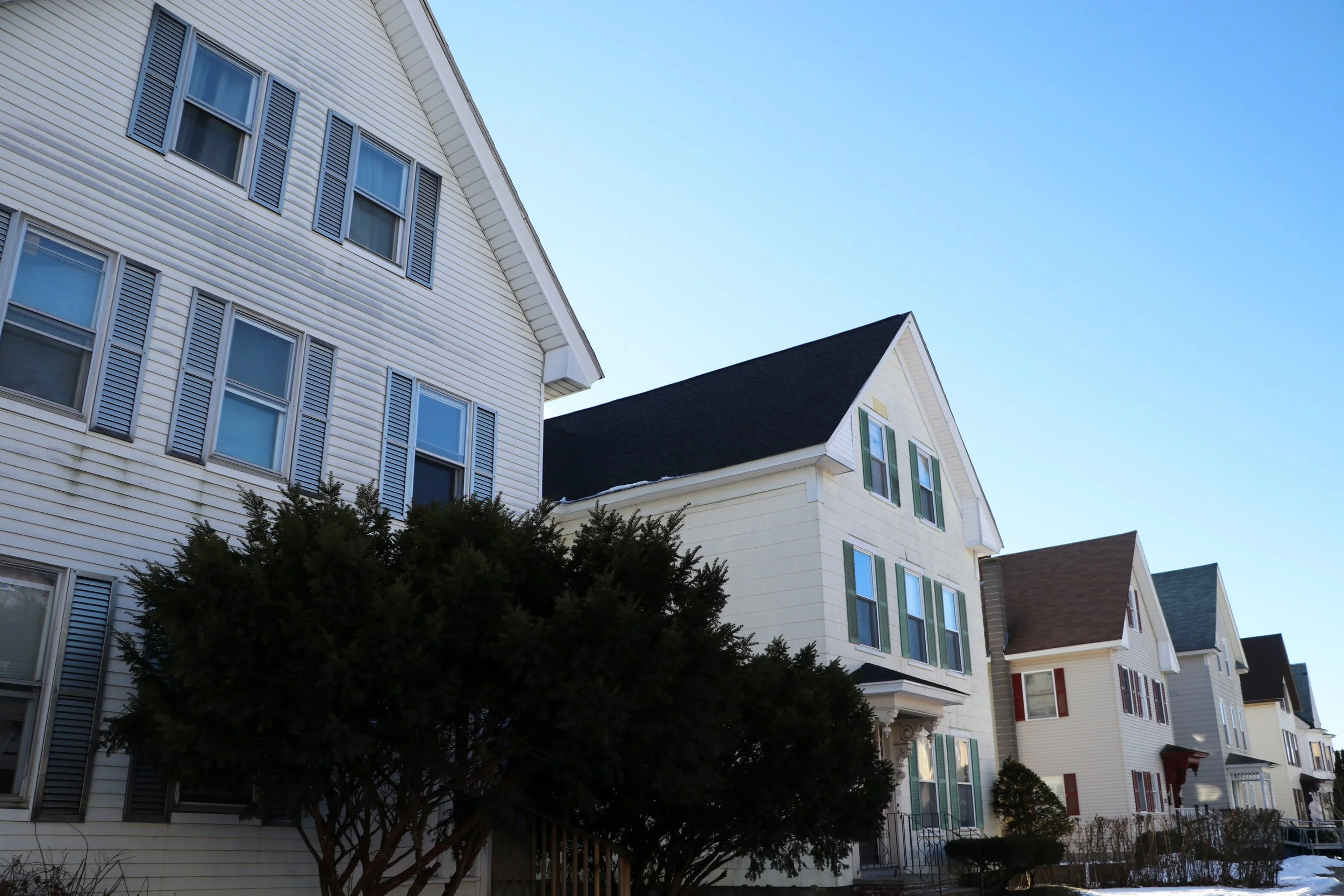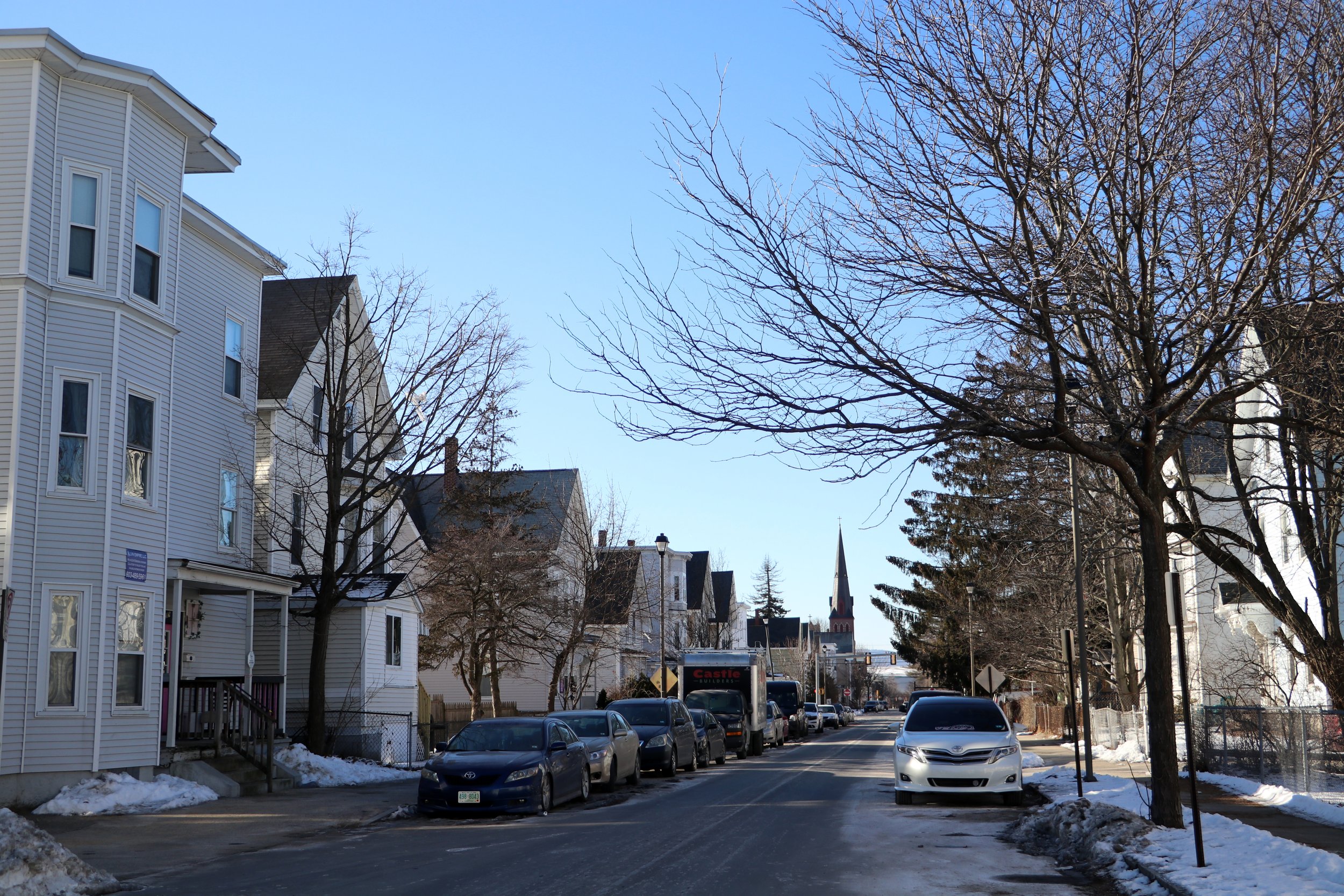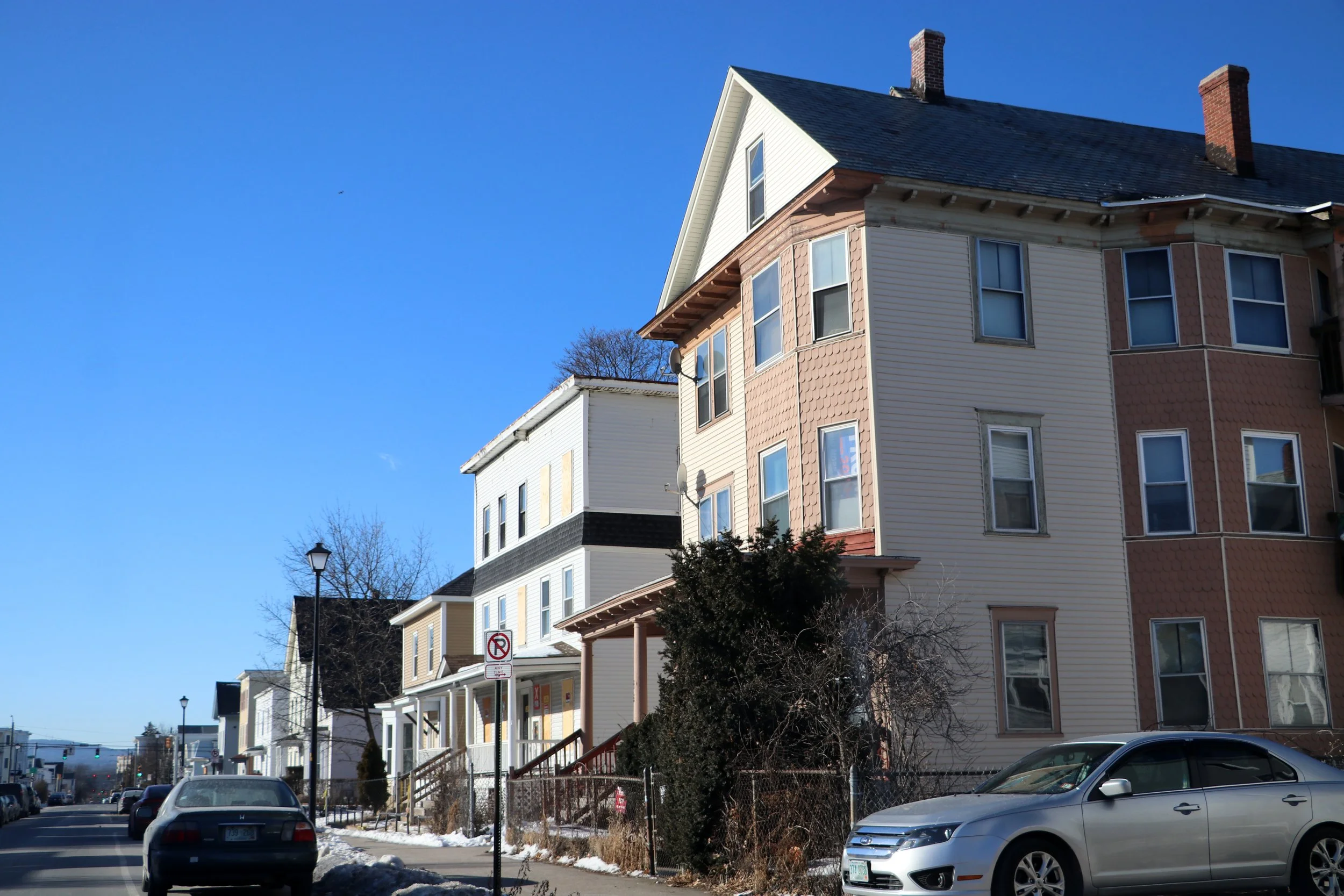How community housing policies work as tools of discrimination
By Johnny Bassett-Granite State News Collaborative
Editor’s note: This is the third part of “Invisible Walls,” a joint project of the Granite State News Collaborative, NH Business Review, Business NH Magazine and NH Public Radio that describes how exclusionary zoning laws have reinforced areas of persistent poverty, impacting many aspects of community life, including crime, public health, affordable housing and access to economic opportunity in Manchester. The team used Manchester as a case study, but the same sorts of exclusionary zoning practices present in Manchester are common across the state, and likely have had similarly-broad effects.





Zoning, in the broadest sense, is the set of laws that dictates how land can be used, including what can be built where. The local zoning or planning board in most communities records these laws in maps and texts, the latter of which can be quite unwieldy. (New York City’s ordinance is a 3,400-page behemoth that comes with its own 200-page summary, making Manchester’s 165-page ordinance look relatively slim.)
Despite the heft, the questions that these documents try to answer are surprisingly simple.
“Zoning is an expression of what the citizens want their community to look like,” the planning team from Manchester’s Planning and Community Development Department said in emailed comments to the Granite State News Collaborative.
Does the community want to be one of stately houses on sprawling lots? Does it want to have a bustling downtown, full of small businesses and apartments? There are no right or wrong answers, of course, which why these questions often provoke raucous debate – and the answers communities settle on are frequently revised.
“As the citizens’ desires change over time, so should zoning ordinances,” the planners wrote, which is why a city’s zoning “will always be a product of its time.”
Based on a review of Manchester’s zoning maps going back to 1927, the history of the city’s zoning laws does indeed show how dramatically a community’s desires can change.
But this history also shows that Manchester’s zoning laws have mostly maintained the status quo established by the Amoskeag Company, continuing the pattern of center city poverty and North End wealth that has existed in Manchester since the late 1800s.
“Zoning is a reinforcing phenomenon,” said Elliott Berry, co-director of the Housing Justice Project at NH Legal Assistance. “You get wealthy people living in good housing, and they want people like them living around them. It’s a classic situation.”
As the city prepares to update its zoning laws, following the adoption last August of a new Master Plan, a better understanding of its zoning history may help residents and planners design a more equitable city for future generations.
One key to the success of this project is a clear-eyed understanding of the politics behind the zoning debates.
According to the work of William Fischel, a retired Dartmouth economist and national expert on zoning, one of the major causes of zoning drama can be understood as simple economics.
“The dominance of homeowners and their touchiness about their main asset explain why nearly every suburban zoning ordinance puts the single-family, owner-occupied home at the pinnacle of uses to be protected,” Fischel wrote in a 2004 history of American zoning. “For most of them, home is by far their largest financial asset and, unlike owners of corporate stock, homeowners cannot diversify their holdings among several communities. Fear of a capital loss to their major asset and desire to increase its value motivate owners of homes to become ‘homevoters,’” advancing their own interests each time they participate in local elections and public hearings.
According to Fischel, the fear- and finance-driven behaviors of this group, catalyzed by a series of perceived threats to home values over the last century, help explain why zoning laws have gradually tilted to protect the investments of existing homeowners over the last century.
Zoning laws do this by reducing the number of homes that can be built in a given area, typically through the use of single-family zoning. Doing so increases competition for existing homes and apartments, which in turn increases prices, making the path to owning or renting harder for any newcomers.
The additional observation that white Americans own homes at significantly higher rates than Black Americans, on average, has given the current debate around zoning an especially volatile political charge.
Concentration of poverty
In many respects, Fischel’s history fits well with Manchester’s history since the demise of the Amoskeag Company in the 1930s.
In 1916, the year before the Department of Labor’s report on infant mortality suggested that the Manchester’s pockets of poverty should be “controlled by adequate restriction,” the first comprehensive zoning law in America was established in New York City.
And so began what Fischel called “the land-use revolution.”
Over the next few years, community-wide zoning laws spread around the country, expanding and formalizing the systems of private deed restrictions or limited-area zoning laws that had communities had experimented with in the preceding decades. Zoning’s adoption was lightning fast. Between 1916 and 1936, Fischel wrote, the number of cities with comprehensive zoning laws increased from eight to more than 1,300.
The city of Manchester entered the fray in 1927. After the Manchester Planning Board successfully lobbied the Legislature in 1925 to allow towns around the state to write their own zoning laws, Mayor Arthur E. Moreau made the writing of a local zoning ordinance one of his administration’s top priorities. Replacing the city’s existing system of private deed restrictions, the goal of the citywide zoning law would be to protect the city’s residential districts, he said, which “would be irreparably damaged” by unrestrained construction, according to the city’s annual report for 1926.
“In no other way can property be safeguarded against unscrupulous persons, erecting any kind of building without regard to the home life, pride, and comfort of the American family,” Moreau declared in his inaugural address.
A year later, when the new ordinance was passed, Manchester’s residents were presented with a three-tiered vision for their city’s future. At the top of the pyramid was the roughly 2% of the city that was restricted for single-family residences – the most expensive type of housing. All of the land reserved for single-family was in the North End.
In the second tier was the more than 80 percent of the city that also allowed two-family homes, covering most of the area outside the urban core. Two-family homes were a staple of the immigrant community in mill towns across the Northeast at that time.
Finally, there was the 2% of the city that also allowed multifamily, almost all of which was located near the mills on either side of the river. In contrast to the Amoskeag policy, which had erected one wall by preventing unskilled immigrants from living too close to the mills, the new zoning law restricted the movement of this demographic group on two sides by preventing its spread into the suburbs as well.
With the establishment of this new law, zoning helped ensure that the poverty concentrated in center city would not spread outward, while the North End would continue as an enclave of the city’s economic elite.
After just nine months of operation, the city’s newly established planning body celebrated its good work. According to the board’s analysis in the city’s 1927 annual report, the property value it had saved through protection from undesirable development was on the order of several hundred thousand dollars, equal in value to roughly $3 million to $6 million dollars today.
But in Manchester, as was true around the country, the full effects of zoning would take some time to play out.
“The land-use revolution … did not happen all at once, of course,” Fischel wrote in his 2004 history. Across the country, “the Great Depression and World War II set back real estate development, so the full impact of zoning was not felt until after World War II.”
By the early 1960s, all over the country the arrival of the interstate system meant that newly accessible suburbs offered exciting possibilities for center city residents. More jobs became accessible, as did affordable housing far from the urban core.
But these opportunities also threatened to upend the status quo in cities, Fischel wrote, who worried about a mass exodus of residents to the suburbs. This triggered a new wave of revisions to many cities’ zoning laws.
“With a community’s quality of life a more important determinant of home values than location vis-a`-vis jobs, homeowners became even more watchful of zoning changes that might affect that quality of life,” Fischel wrote. “The formerly relaxed accommodation of development of the 1950s began to harden… into a permanent cast that kept the poor and higher-density development at bay.”
Management Zoning
In New Hampshire, this trend appeared in the form of growth management zoning.
Under this framework, New Hampshire towns used zoning to help address rapid population growth between 1960 and 1990, when the U.S. Census registered statewide population growth of more than 20 percent each decade. The towns feared that residential development would increase school enrollments, requiring expenditures far in excess of the property tax revenue generated by the additional housing. To prevent that development, many towns introduced zoning policies that were designed to slow or stall population growth by making it difficult for new units to be built at all – often through the widespread use of single-family zoning.
This policy is easy to see on Manchester’s 1965 zoning map.
Johnny Bassett
Between 1927 and 1965, single-family zoning’s coverage expanded from 2% to 70% of the city, making it by far the dominant form of housing within city limits. This meant that without permission from the zoning board, it would be impossible to build more of the two-family structures that had been so popular at the beginning of the century. Meanwhile, the amount of land reserved for two- and three-family homes plummeted, dropping from 80 to 10 percent. Multifamily housing was left with the smallest amount of land of all, at just 1% – nearly all of it in center city.
Since 1965, the story of Manchester’s zoning has been one of gradually opening up more parts of the city for multifamily development – though the trend of high-density housing in center city and low-density housing elsewhere has largely endured.
This has become especially noticeable in recent years as the racial makeup of center city neighborhoods has dramatically transformed.
Between 1965 and 2000, relatively little on the zoning maps changed. According to one map from late 2000, the zoning law’s focus on single-family had lessened slightly since 1965, dropping from 70% to 67% of the city’s area. Medium-density housing, including two- and three-family homes, increased slightly from 10% to 13%. Meanwhile, multifamily accounted for only 3%, increasing just two points over four decades.
Changes in the last 20 years have been much easier to see. According to an updated zoning map provided in late 2021 by the city planner’s office , the area reserved for single-family zone had fallen from 67% to 54%. Medium density dropped from 13% to roughly 7%. Meanwhile, multifamily grew from 3% to nearly 10% – the greatest share of land allocated to multifamily in the city’s zoning history – and spread to several new neighborhoods outside of center city.
These changes echo the clear but limited progress that many communities in the state have made toward providing more affordable housing in the last 30 years, spurred into action by a NH Supreme Court opinion in the early 1990s and a follow-on piece of legislation approved in the late 2000s.
In 1991, the court ruled in the case of Britton v. Chester that all towns that handle their own zoning must allow “realistic opportunities" for the development of housing that is affordable to low- and moderate-income families. They must, the court said, because it is their responsibility to share the burden of population growth, rather than putting up obstacles to keep outsiders from coming in.
“The zoning ordinance evolved as an innovative means to counter the problems of uncontrolled growth,” the court wrote. “It was never conceived to be a device to facilitate the use of governmental power to prevent access to a municipality by outsiders of any disadvantaged social or economic group.”
The court likened these actions to the construction of physical barriers, like the walls of a medieval fortress, warning that towns “may not refuse to confront the future by building a moat around themselves and pulling up the drawbridge.”
Although housing advocates hoped the Britton decision would lead to rapid improvements in New Hampshire’s housing market, very little changed over the next decade and a half. Towns continued to embrace ordinances that made it difficult, if not impossible, to build multifamily housing.
In 2008, after years of debate, the NH Legislature passed the Workforce Housing Law (RSA 674:58-61), which required municipalities to comply with the Britton decision by providing “reasonable and realistic opportunities for the development of workforce housing, including rental multifamily housing.”
Unfortunately for some of the New Hampshire’s newest residents, those changes have come rather slowly, according to a 10-year retrospective on the Workforce Housing Law by the NH Housing Finance Authority.
Especially in light of the housing crisis, the authors wrote, “it is surprising to discover how little progress has been made by some municipalities to address the requirements of the workforce housing law since the legislation was enacted over 10 years ago.”
This has become especially noticeable in the last 30 years, as Manchester’s center city has become increasingly poor and non-white, leading to the situation we see today.
“This map of 100 years of zoning boundaries in Manchester shows that there has been a consistent policy of keeping multifamily contained,” said Elliott Berry of the NH Legal Assistance. “For a multiplicity of reasons, including neighborhood resistance to change, expanding opportunities for lower wage workers and other low income people to live in more desirable environments has proven to be very difficult.”
City government, he said, can continue to help change this situation for the better.
“Zoning isn’t the full answer,” he adds, “but without changes to zoning, it’s impossible to make headway with any of the other issues.”
The city is in the process of drafting the new zoning code, and the planning team wants citizens to get involved. According to the city’s planning team, residents can learn more and provide comments at manchesternh.gov/landusecode, and they can participate in person at a two-day public outreach event, titled “Code-A-Palooza,” which will be taking place this upcoming March.
“We encourage any members of the public interested in learning more about the city’s zoning to attend this event and help us work towards a new host of regulations that work better for everyone.” the planning team said.
For would-be renters like Anthony Harris and Shaquwan’da Allen, changes to the zoning regulations couldn’t come soon enough. Last July, the couple was sitting at their home in the center city watching a movie when someone fired a shotgun right in front of their apartment.
“It made my Queen jump out of bed,” Harris said, referring to his girlfriend. “For a second, she was scared,” fearing that stray rounds might come into the house. Harris initially didn’t think the shooting was worth worrying about. “Ah, it’s Fourth of July, they’re just playing,” he thought. “But then we find out. Nah, it was actually shooting at somebody.”
That was all he needed to know. “And I was, ‘Oh, we got to go.’”
He and Allen are currently saving up to find an apartment in another part of the city.
With rents still sky-high, however, leaving center city remains out of reach.
Bill Wilkinson contributed research to this report.
These articles are being shared by partners in The Granite State News Collaborative as part of our race and equity project. For more information visit collaborativenh.org.

